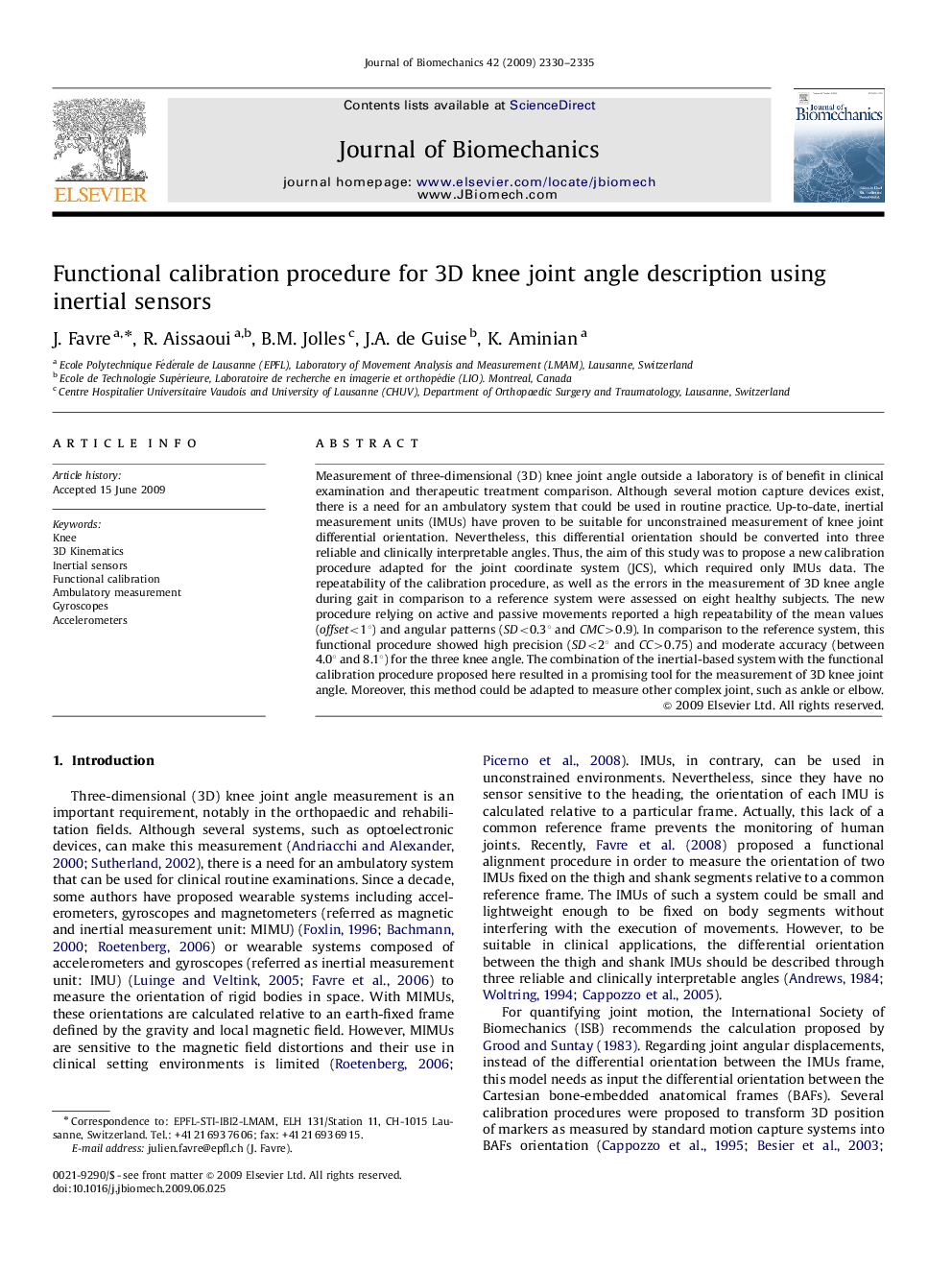| Article ID | Journal | Published Year | Pages | File Type |
|---|---|---|---|---|
| 10433531 | Journal of Biomechanics | 2009 | 6 Pages |
Abstract
Measurement of three-dimensional (3D) knee joint angle outside a laboratory is of benefit in clinical examination and therapeutic treatment comparison. Although several motion capture devices exist, there is a need for an ambulatory system that could be used in routine practice. Up-to-date, inertial measurement units (IMUs) have proven to be suitable for unconstrained measurement of knee joint differential orientation. Nevertheless, this differential orientation should be converted into three reliable and clinically interpretable angles. Thus, the aim of this study was to propose a new calibration procedure adapted for the joint coordinate system (JCS), which required only IMUs data. The repeatability of the calibration procedure, as well as the errors in the measurement of 3D knee angle during gait in comparison to a reference system were assessed on eight healthy subjects. The new procedure relying on active and passive movements reported a high repeatability of the mean values (offset<1°) and angular patterns (SD<0.3° and CMC>0.9). In comparison to the reference system, this functional procedure showed high precision (SD<2° and CC>0.75) and moderate accuracy (between 4.0° and 8.1°) for the three knee angle. The combination of the inertial-based system with the functional calibration procedure proposed here resulted in a promising tool for the measurement of 3D knee joint angle. Moreover, this method could be adapted to measure other complex joint, such as ankle or elbow.
Keywords
Related Topics
Physical Sciences and Engineering
Engineering
Biomedical Engineering
Authors
J. Favre, R. Aissaoui, B.M. Jolles, J.A. de Guise, K. Aminian,
